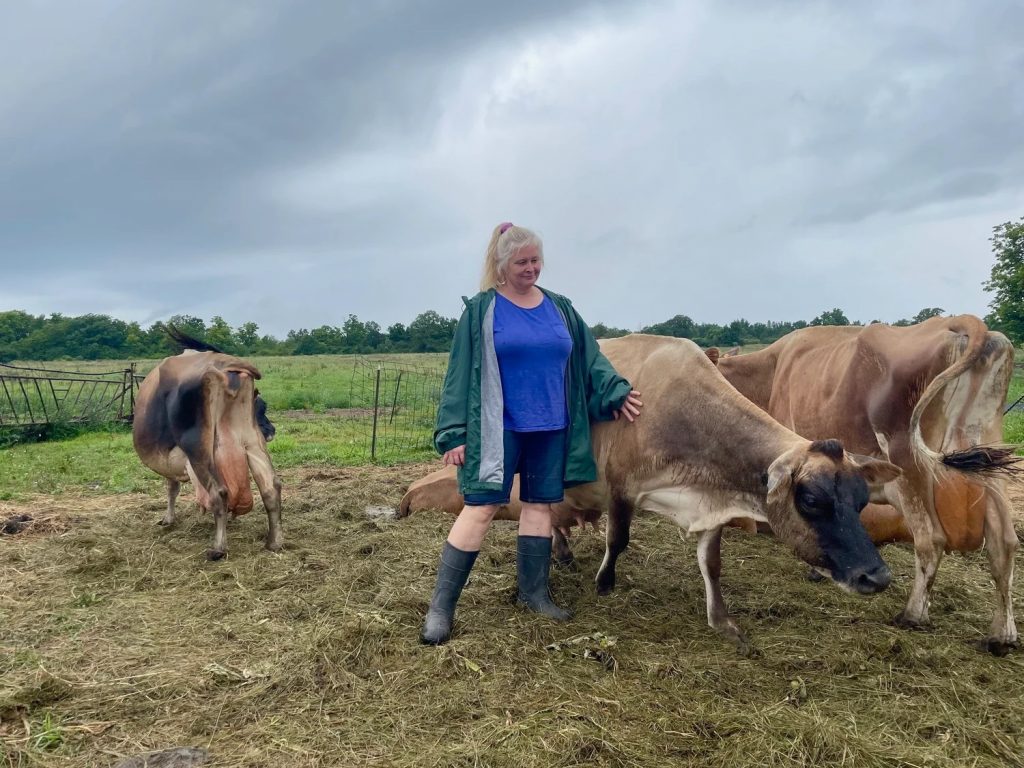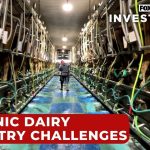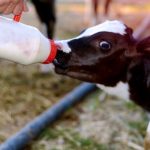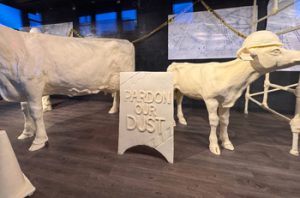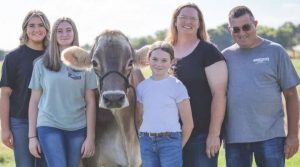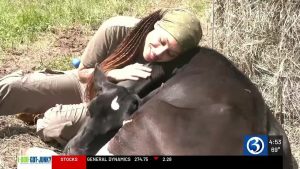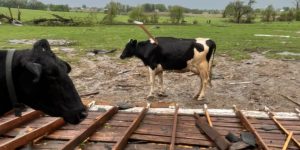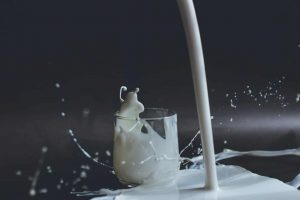
Hester Chase has been adapting to climate change for close to 25 years. It started in 2000, when she moved her cows from California.
“My father was very studious, and he felt the climate was changing well before anyone really thought the climate was changing,” Chase said. “He wanted a place where it would be still hospitable to farming, to people.”
There just wasn’t enough water in California. So Chase and her daughter, her brother, and some family members trekked across the country with their cows, stopping every 15 or so hours to milk.
They landed in Cape Vincent, where Lake Ontario empties into the St. Lawrence River.
Chase said there was a steep learning curve to figuring out how to farm in a completely new climate that first year in the North Country.
“I did not know that water could freeze, much less cow poop,” she said. “I couldn’t believe it. I didn’t have the skills. I didn’t know what was going to happen.”
Since then, they’ve built up their 110-head certified organic dairy farm. Chase said she’s proud of the way she manages her animals and land.
But Chase didn’t leave climate change behind in California. And this time, she said they have to adapt to the impacts that are already happening here in the North Country.
“Stronger winds, deeper snow, mud, and heat, just everything is going to be more extreme,” she said.
A fellowship for farmers
Agriculture plays a major role in climate change. The USDA estimates that in 2022, agriculture contributed 10% of US greenhouse gas emissions. But farmers also shoulder the direct impacts of climate change in their fields and barns.
Chase has turned to the experts for help.
Last year, she joined a climate adaptation fellowship with the USDA’s Northeast Climate Hub. It’s a yearlong program that provides education and support to dairy farmers who want to prepare for climate change.
Chase was paired with Kitty O’Neil, a climate resilience specialist with Cornell Cooperative Extension. She, Chase, and Lindsay Ferlito with Cornell Pro Dairy have been working together over the past year.
Farmers in the program start by brainstorming all the ways climate change makes their farms vulnerable, O’Neil said.
“We sat around the table three or four times and worked through, how do you imagine a heavy-duty thunderstorm impacting the farm? How do you imagine a drought impacting the farm?” O’Neil said. “You have to think about all different aspects of the farm and everything the farm depends on.”
That’s pretty daunting for farmers to lay out, especially when they’re already worried about just surviving for the year, O’Neil said.
That’s why scientists say climate change is a “threat multiplier” for farms. It makes everything that’s already hard even worse.
O’Neil said that farmers are pretty good about planning for the short, medium and long-term, but climate change hasn’t been a factor on those ever-growing to-do lists.
“Now it really, really needs to be,” O’Neil said. “We had some really handy in-your-face examples of this this past year in the North Country. On the east side of the North Country, there’s been a pretty significant drought, which really harmed a lot of crop production. On the west side of the North Country, we had quite the opposite. We had way too much rain falling way too fast with some of those hurricanes.”
Adapting to more precipitation
Chase said she has first-hand experience with too much rain. That’s one of the things she decided to focus on during her fellowship.
When it rains on Chase’s farm, water pours across the path cows take from the pastures to the milking barn. Chase said it makes a mess, especially in a mild winter.
“This last winter was pure mud. It really never froze. Our cows come in and out of the barn, so it was really challenging to keep them in a clean environment,” she said. “We usually count on snow cover and a freeze, and that didn’t happen. That’s really bad for cows, bad for people, bad for the environment, bad for water.”

While this winter has been pretty cold, that’s not going to be the case in the coming decades. North Country winters are getting warmer and wetter.

By 2050, climate scientists project it could be up to eight degrees warmer in the winter, with fewer days below freezing. Plus, New York’s Climate Assessment estimates that winter precipitation is expected to increase between 11 and 31% by the end of the century. That’s going to be rain, not snow, where Chase lives near Lake Ontario.
So, Chase built a gravel lane with a culvert underneath to divert the water away from the barn. But after an unusually rainy day, that might not be even enough for what’s coming, she said.
“We got two inches of water, and the water just came over it. We don’t usually get two inches of water or four inches of water,” Chase said.
Budgeting for the future
Chase said she’s also planning for the long-term, like rebuilding her milking barn.
But all these projects and plans come with great expense on tight budgets.
O’Neil said that’s a really important part of the whole adaptation equation for farmers.
“There are some direct benefits to the farm, absolutely, for implementing some of these management and infrastructure changes,” O’Neil said. “However, there’s a lot of benefit for the local, regional, and larger communities, as well. We will all be benefiting when we can reduce greenhouse gases. We’ll all benefit if that farm can get its products to market on time with a good price.”
The 10 dairy farms in the program are spread out across Northeast, including North Country Creamery in Keeseville.
Chase said the program has made her feel less alone in tackling these problems because she’s meeting people who care about all of this just as much as she does.
“It’s kind of a recognition that what my family has been concerned about ever since I was a little kid is now kind of mainstream,” she said. “It’s kind of reassuring that the choices in the past are still pertinent and they still matter. But we’ve got a long way to go, for sure.”
Chase said she wants to be deliberate about making adaptations. She says the projects are investments into her continued stewardship of the land and for the future, and she wants them to last.

You can now read the most important #news on #eDairyNews #Whatsapp channels!!!
🇺🇸 eDairy News INGLÊS: https://whatsapp.com/channel/0029VaKsjzGDTkJyIN6hcP1K
